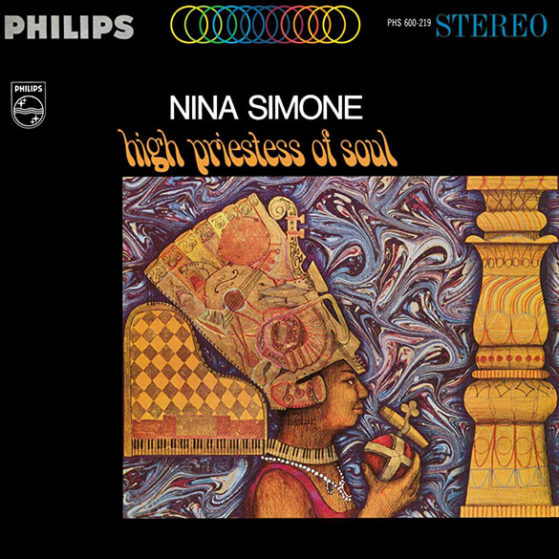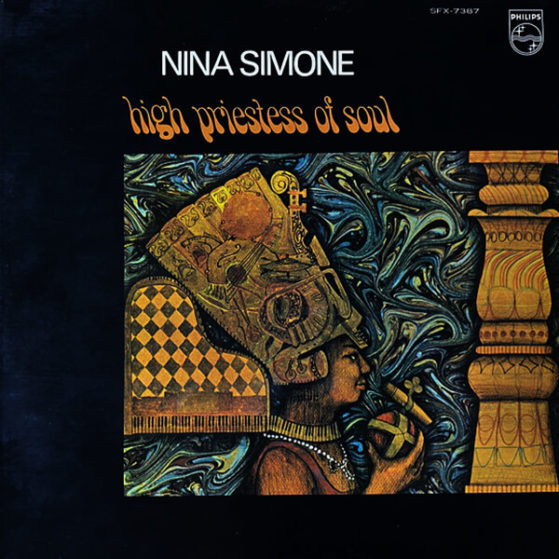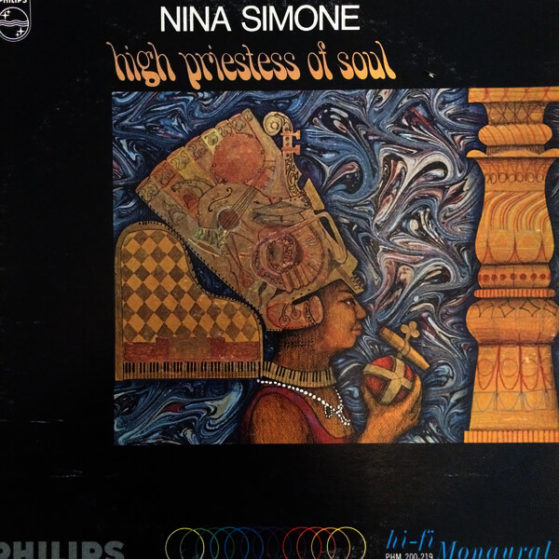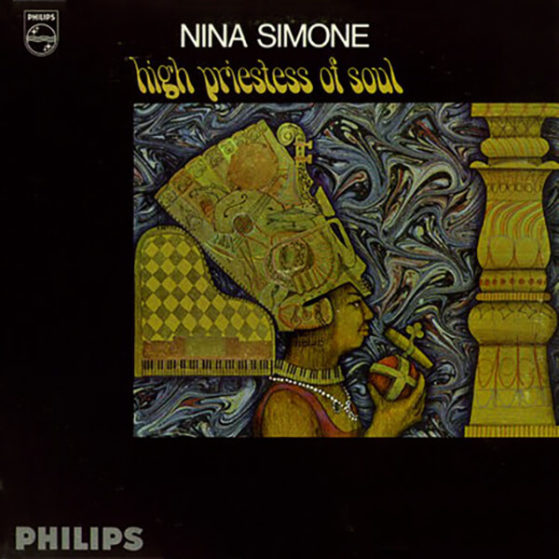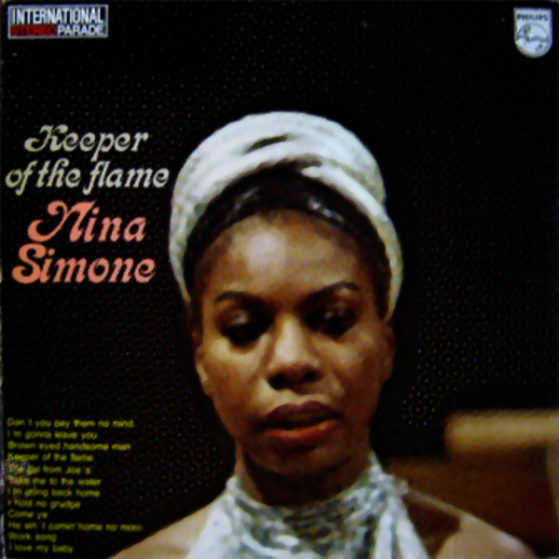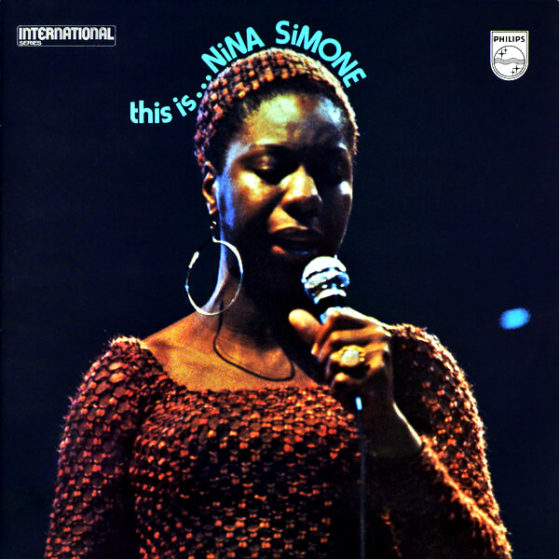HIGH PRIESTESS OF SOUL
Most of it has been said before. Much of it has been repeated in more was that this writer would dare attempt. The story is very simple.
Nina Simone is an artist of tremendous magnitude. She possesses the ability to strip you of whatever preconceived ideas you had and compel you you to listen to her. Like her or not, one reliable reporter essayed that “listening to Nina Simone and seeing her perform is an experience you are not likely to forget.”
Unfortunately the art world finds itself constantly in conflict with the world of commercialism. And within the commercial world where monetary gauges are the balance of power, we find it necessary to make comparisons.
In attempting to compare Nina there are few peers. She is an uncompromising artist who holds no fear in challenging new and different material. If there is an insecurity, it is her deep desire to communicate and her wish for her audience to relate to the material she performs.
And when she is unable to communicate it is here that the frustration develops. She does not become defensive upon discovering that the communication has not been what it should have been. She insists upon trying again and again, ever cognizant of the need to transfer her feeling and interpretation to the audience and almost bare her soul hoping you, the audience, will see, hear, and understand.
Nina Simone does not seek the easy way. A review of the material she has recorded during the decade of her recording career will attest to this. Her way has been using much original material well identified with out artists, and rarely translated by others.
There have been the folk, jazz, country, gospel, blues, ballads, and tunes of simple faith and narratives of slices from life. Within these songs, Nina has been the artist and the commentator. She has painted the picture and she has reported the events.
Through her illustrious career, she has reached a segment of the music-loving public who have the infinite ability to know and recognize a true artist.
For who could give us “Mississippi Goddam” and “Four Women” and tear us apart with the hard realities of the stories these tunes contain. Who could sketch the sad and poignant story of “The Other Woman” and “Little Girl Blue.” None but a “High Priestess of Soul.” In this newest album, Nina adds a collection of new songs and others done over in her personal and magnetic style.
There is nothing superficial about Nina Simone. There is no fakery. There is no planned premise that given the right amount of exposure and the right tunes will deliver a certain portion of the record buying public. Nina is simply a tremendously talented artist who has integrity and conviction.
From “Brown Eyed Handsome Man” by Chuck Berry to Rudy Stevenson’s “I’m Going Back Home” and “I’m Gonna Leave You”, “Keeper of the Flame” by Charles Derringer, Bobby Scotts (of “Taste of Honey fame) “Don’t You Pay Them No Mind,” husband Andy Stroud’s “I Love My Baby” and Duke Ellington’s “The Gal From Joes” are classic examples of Miss Simone at her best.
Those of us who are Nina Simone Fans know that in her we have become partners in a living experience of an artist who says, “share with me the feelings of love and disappointment, walk with me along the road of life that is filled with blues but celebrate also with me those few and treasured moments that makes life almost bearable, but do not turn from me when the chips are down, for this is life also. For as an artist, I must give of myself wholly and completely to the expression of that which is within.”
Nina does this again and again. And again in this album, the “High Priestess of Soul” again gives.
MODIFIED EDITIONS
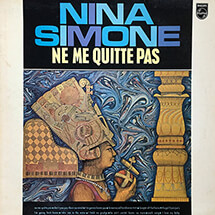
NE ME QUITTE PAS (1972)
Additions: Ne Me Quitte Pas; Subtractions: Come Ye
